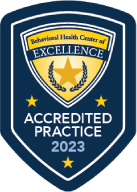The four functions of behavior help us understand why our children display certain behaviors. By understanding the function, or “Reasoning” behind the behavior, we can identify various antecedents (What happens before the behavior?) and consequence strategies (What was the reaction to the specific behavior?) to help you and your family react in a way that decreases likelihood of continuous behaviors. Today’s topic will be on the function of “Attention”.
The utilization of antecedent strategies is essential to helping your family prevent the problem behavior from occurring. It also helps identify triggering events. What exactly are antecedent strategies? They are designed to alter the environment to assist in preventing a problem behavior from ever occurring in the first place.
These are strategies you and your family can utilize to help prevent problem behaviors from appearing. Some antecedent strategies that can be used based on “attention” maintained behaviors include:
- Noncontingent reinforcement (Providing reinforcement in this instance in the form of “attention” frequently to where your child does not want to engage in the problem behavior to gain your attention)
- Functional communication (Teaching your child how to gain your attention in an appropriate or even kind way)
- Preference assessments (Give your child choices while they wait for your attention)
- Premack Principle (First then statements to indicate when your attention is available. EX: FIRST let me talk on the phone, THEN I will come play with you)
While implementing these antecedent strategies, it is important to remember that these are used PRIOR to the behavior. Identifying and implementing these strategies, as well as knowing triggers signs to those behaviors, will help reduce the likelihood of the behavior developing.
Your reaction, as a parent or guardian, is important! These reactions will either lead to an increase in the behavior or put that behavior on extinction (The behavior no longer occurs). Consequence strategies are an essential concept that will be covered during parent training at JoyBridge with your BCBA.
These are strategies we use to help reduce these behaviors AFTER they occur. Some of these consequence strategies may include:
- Ignoring (By ignoring these specific behaviors, this teaches your child this is not an appropriate way to gain your attention)
- Modifying the environment (stepping away from the child, or leaving the room)
- Blocking (while minimizing attention as much as possible)
- Differential reinforcement (Providing praise for the behavior you are wanting to see acts as a replacement for the undesired behavior)
The scenario below is an example of how you and your family can utilize these strategies based on the function of “Attention”.
Attention Example: You are at home having a conversation on the phone. Your child comes up to you and begins to hit you for your attention. The function in this specific scenario is attention.
One way to handle this behavior would be to ignore hitting as much as possible. This can be done by stepping away from your child, holding your child’s hand or moving to another room. By doing so, this teaches your child that hitting is not an acceptable way to gain your attention.
Providing specific praise for waiting for you to get off the phone, tapping you on the shoulder, or say “excuse me” are excellent ways to teach your child how to appropriately gain your attention without engaging in behaviors such as hitting.
By identifying the function of a behavior, and utilizing antecedent and consequence strategies provided you and your family will be able to:
- Prevent/limit the behavior from occurring
- Learn how to react to these specific behaviors
- Teach your child appropriate ways to gain your attention
Learning ABA concepts and how to implement them can be challenging and new for families. Our JoyBridge Kids team will work with you and your family to identify practical strategies that will help your child make socially significant gains to help reach an overall improved quality of life!
By: Nick Sobieralski, BCBA, LBA
Contact JoyBridge Kids
To contact a member of our team, please give us a call at 615-560-6622 or complete our online contact form.


